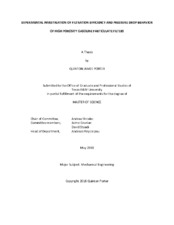Experimental Investigation of Filtration Efficiency and Pressure Drop Behavior of High Porosity Gasoline Particle Filters
Abstract
The increasing number of gasoline direct injection (GDI) vehicles on the roads has drawn attention to their particulate matter (PM) emissions, which are greater both in number and mass than port fuel injected (PFI) spark ignition (SI) engines. Regulations have been proposed and implemented to reduce exposure to PM, which has been shown to have negative impacts on both human health and the environment. Currently, the gasoline particulate filter (GPF) is the proposed method of reducing the amount of PM from vehicle exhaust, but modifications to improve the filtration efficiency (FE) and reduce the pressure drop across the filter are yet needed for implementation of this solution in on-road vehicles. This work evaluates the increase to FE, while keeping the backpressure penalty at a minimum, for GPF samples with different wall thicknesses and cell densities. For both unmodified and modified GPFs, the filtration efficiency was studied using a scanning mobility particle sizer (SMPS), and the pressure drop across the filter was obtained using a differential pressure transducer. The performance of the unmodified GPFs was investigated at three space velocities: 15,000 hr?-1, 30,000 hr?-1, and 60,000 hr?-1. Increasing space velocity through unmodified GPFs results in decreasing FE by approximately 5% for every 15,000 hr?-1 increase, meaning a GPF has its lowest FE and highest pressure drop at 60,000 hr-1. The GPF with the lowest initial FE and pressure drop, 300-10, was modified by preloading calcium sulfate (CaSO4) to form a cake layer on the walls. An improvement of about 10% to the filtration efficiency and increase of about 6% to the pressure drop was measured for a GPF loaded to 20 g/L . This indicates that a preloaded cake layer can improve performance with less penalty than increasing wall thickness.
Citation
Porter, Quinton James (2018). Experimental Investigation of Filtration Efficiency and Pressure Drop Behavior of High Porosity Gasoline Particle Filters. Master's thesis, Texas A & M University. Available electronically from https : / /hdl .handle .net /1969 .1 /174643.


